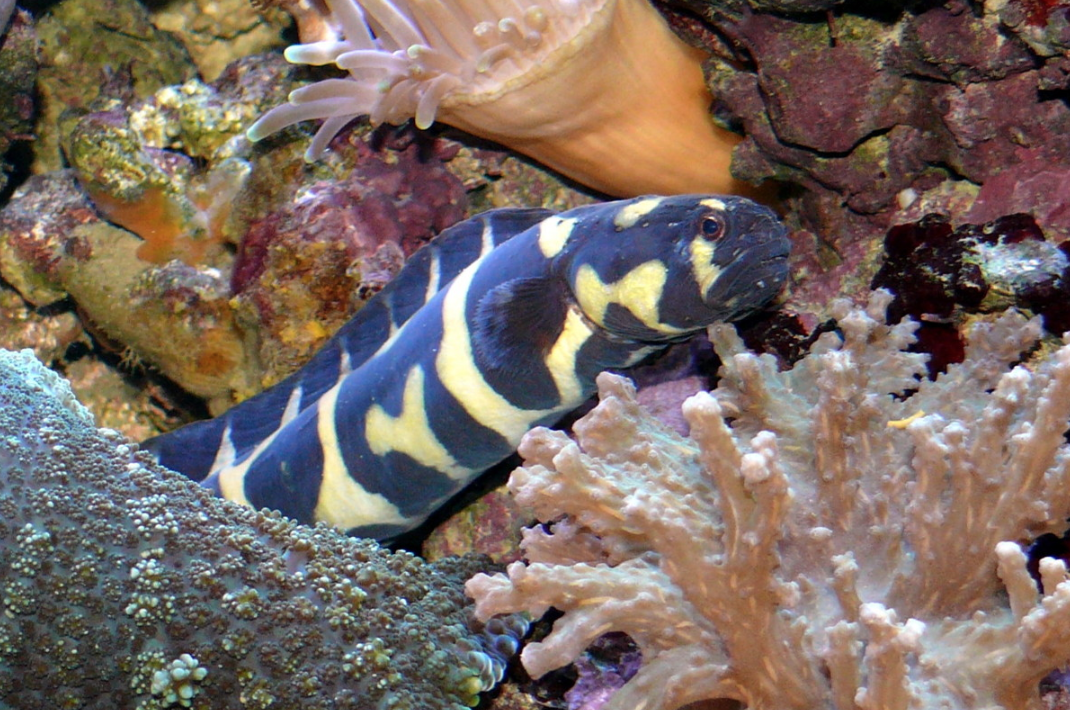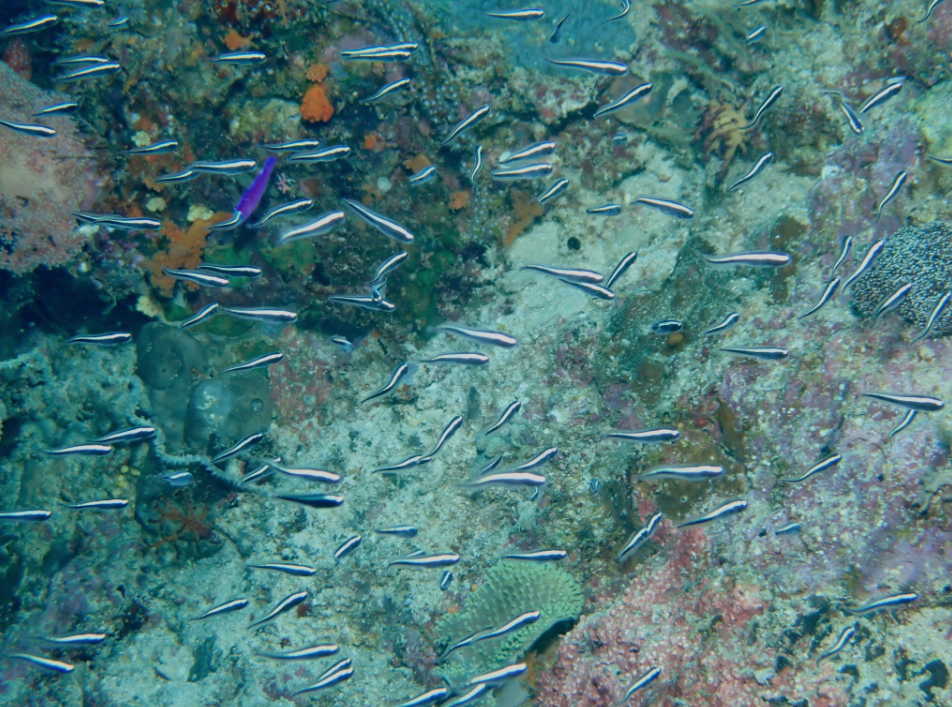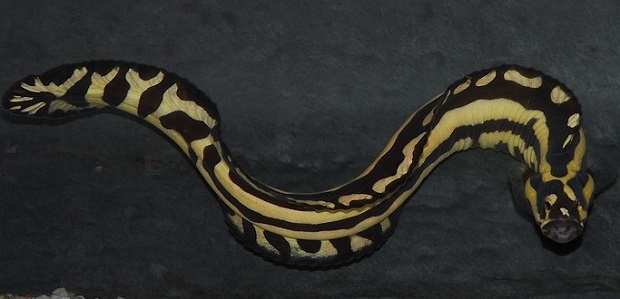Think of cichlid-like saltwater fish and you’ll probably think of damselfish or angelfish, bass, or groupers maybe, but few aquarists are aware that the marine fish most closely related to freshwater cichlids is the Convict Blenny, Pholidicthys leucotaenia.
Also known as the Engineer Goby, Pholidicthys are neither gobies nor blennies and belong instead to the family Pholidichthyidae, one of only two families in the order Cichliformes, the other family being Cichlidae, and containing Oscars, Angelfish, Discus, Malawi cichlids, and more.

Image by Haplochromis, CC BY-SA 3.0 https://creativecommons.org/licenses/by-sa/3.0, via Wikimedia Commons
Two unique species
Until 1996 the Convict Blenny was the sole member of its genus and family too until Pholidichthys anguis was described by Springer and Larson from Northern and Western Australia. The Convict Blenny we keep comes from the Western Central Pacific, from the Philippines south to the Solomon Islands. As juveniles they carry a single white horizontal stripe on a black body, and groups of juveniles use this patternation to mimic the even tighter schooling but venomous Plotosus lineatus catfish. But that’s not all that makes Pholidicthys such fascinating fish.
By day juveniles swim up into the water column in order to feed on plankton, returning to the shelter of a communal burrow by night. They wouldn’t be cichlid relatives without interesting breeding behavior however and Klaus M Stiefel has observed that they not only seek protection in the burrows of their parents, but they also spit food into the burrows to feed the adults, which rarely leave them. The burrows may stretch some 6 meters/19’ into the substrate, and the young dangle by their mouths from thin mucous threads at night.

Image by desertnaturalist, CC BY 4.0 https://creativecommons.org/licenses/by/4.0, via Wikimedia Commons
Behold, The Underminer!
Convict Blennies are widely available and often on sale as juveniles at a low price. They are hardy and easy to keep, the only downside being that they metamorphose at around 6” in length and seek to create those deep protective burrows that they would dwell in as adults in nature. This can make a mess of aquarium substrates and unsecured corals, and with a maximum length of two feet (60cm,) they live up to their other name Engineer Goby. Plastic pipes and caves can help to mitigate that.
As adults, they take on a much more Moray eel-like pattern and although they may prey on small ornamental shrimp and crabs, they remain pretty fish safe.



